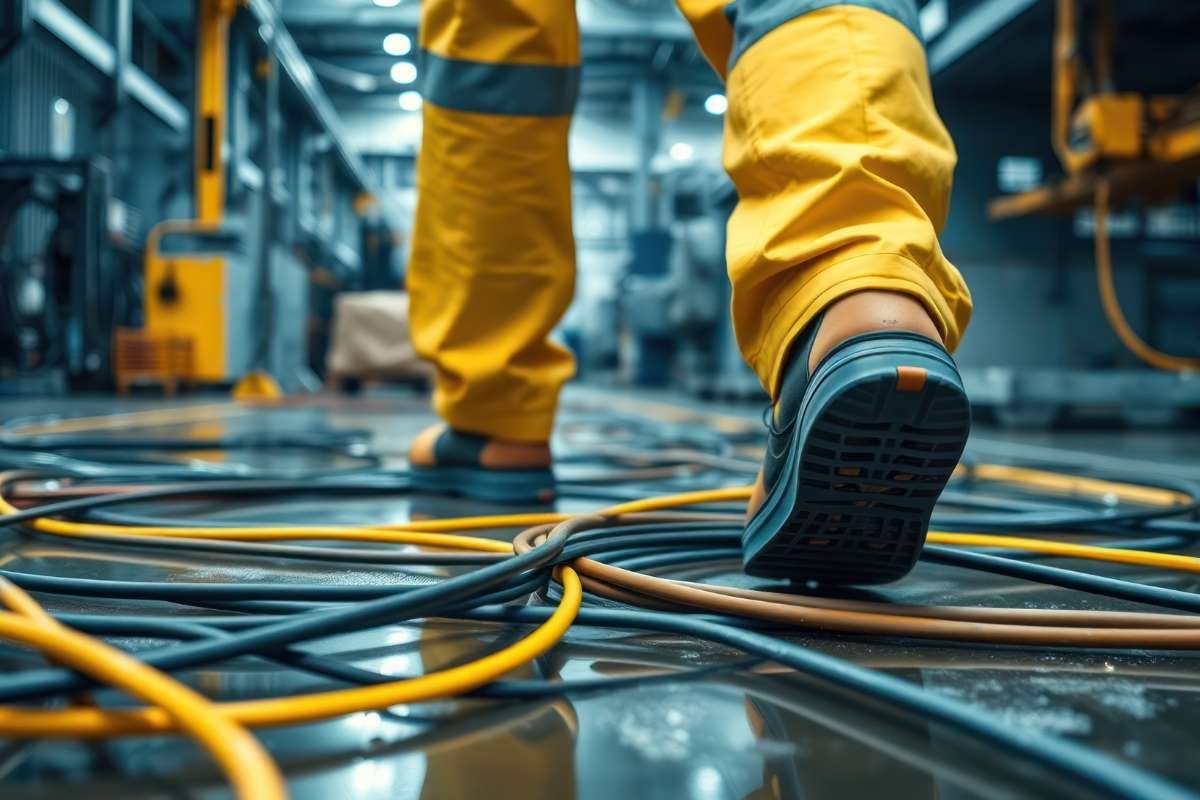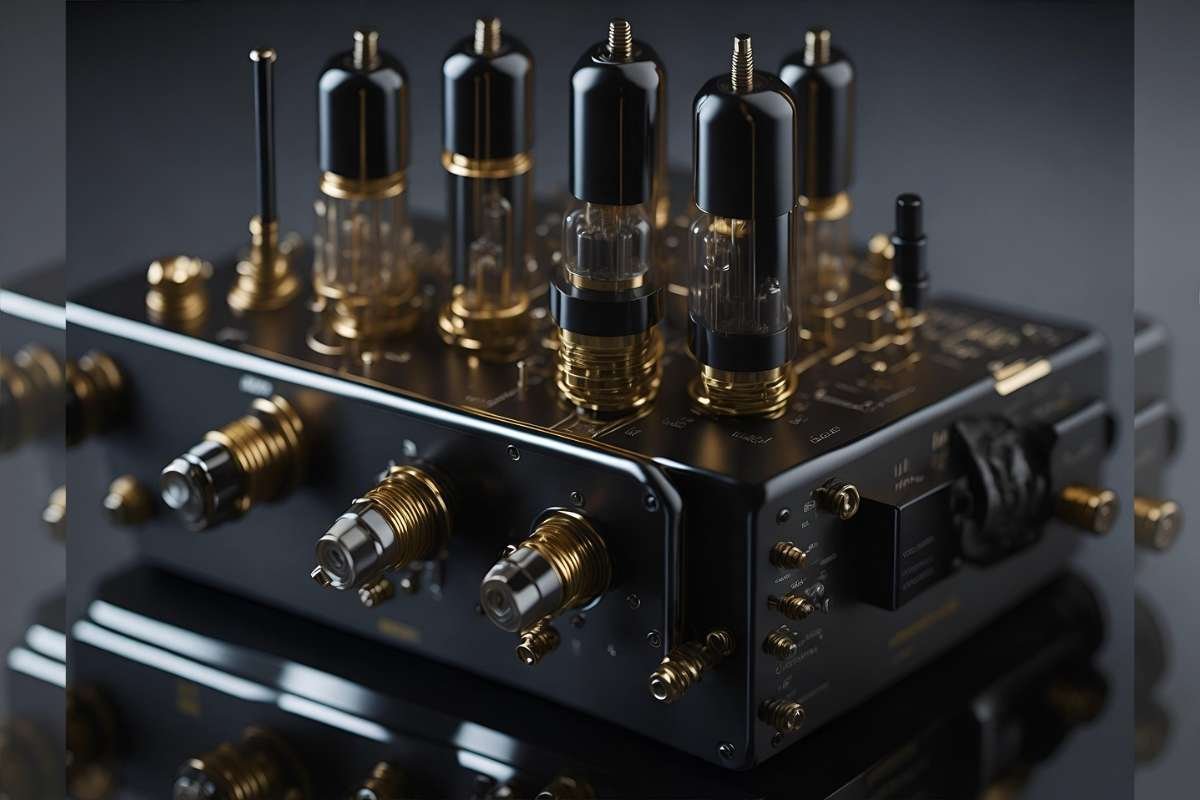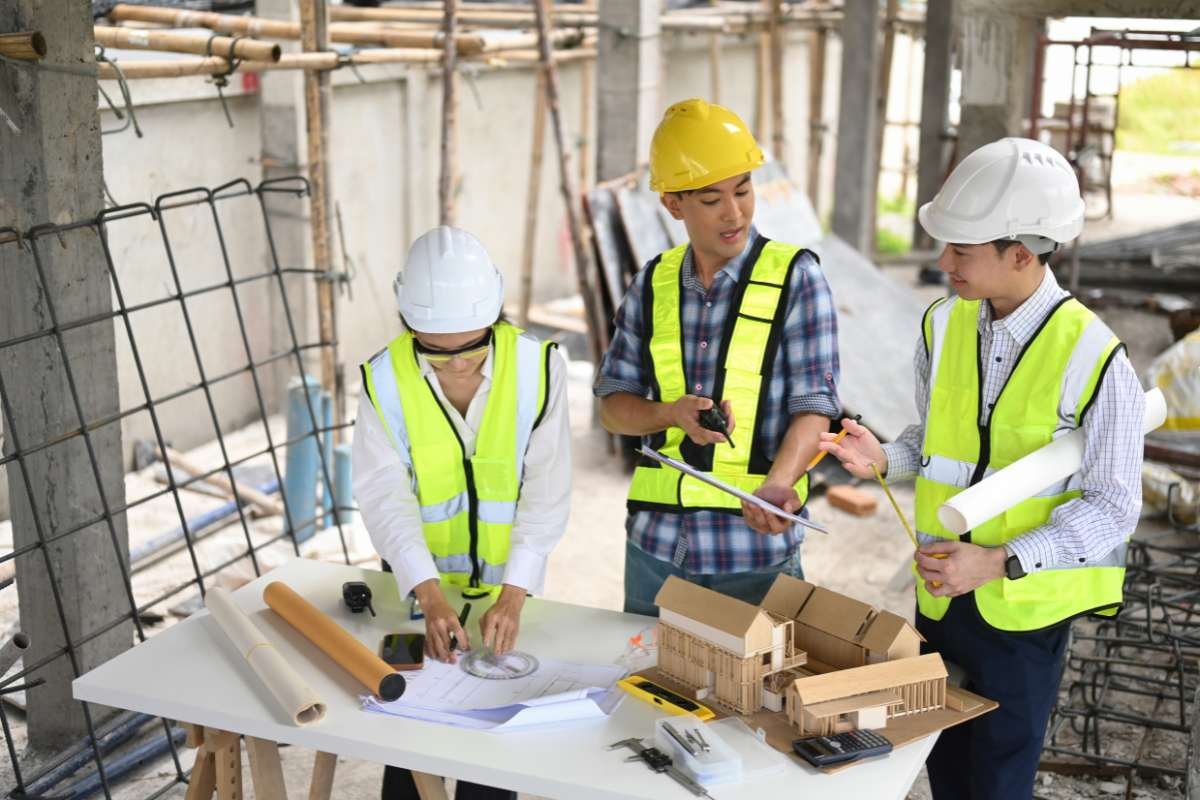To prevent electrical hazards, it’s crucial to recognize warning signs and take proactive safety measures. These dangers aren’t limited to construction sites—they can occur in offices, factories, warehouses, or any environment with electrical systems in place. With a bit of awareness and care, workplaces can significantly reduce the risk of fires, injuries, or worse.
Know the Common Hazards
It’s easier to stay safe when people know what to watch out for. Some electrical risks are more common than others.
- Broken wires can cause electric shock or fires, especially if they’re exposed or hanging loose.
- Too many plugs in one outlet can overload the circuit and lead to sparks or electrical fires.
- Water near electric tools or outlets makes electrical shocks more likely.
- Old or damaged electrical equipment may have hidden problems that increase the chance of electrical accidents.
- Missing or bad grounding allows electricity to flow where it shouldn’t, like through a metal surface or even a person.
These issues often seem small at first, but they can become very dangerous if left alone.
Schedule Safety Checks
Regular inspections are one of the best ways to catch problems early. A trained electrician should check:
- Breakers and safety switches
- Wires and connections
- Power outlets and electrical systems
To set up a professional inspection, visit this page or a trusted electrician’s website and schedule a time that works for your team. Having a qualified expert check your setup can reduce the chance of electrical incidents and give your workplace peace of mind.
Take Care of Tools and Equipment

When machines or electrical devices are used every day, they can wear out over time. That’s why regular checks are important. It’s a good idea to look for things like:
- Cracked cords or loose wires
- Plugs that don’t fit properly
- Tools that feel hot during use
If a tool doesn’t seem safe, it should be taken out of use until it’s fixed. Trying to fix electrical systems without training can lead to bigger dangers. It’s better to wait for someone who knows what they’re doing.
Teach Workers How to Stay Safe?
Workers need to understand how Prevent Electrical Hazards works. Even simple mistakes can cause harm. That’s why training is so important. It should cover things like:
- How to notice an electrical hazard
- What to do if something looks unsafe
- How to use electrical equipment the right way
- When it’s not safe to use extension cords or power strips
Teaching safe work practices helps reduce the chance of electrical incidents. Training should happen more than once, especially when new tools or systems are added.
Use the Right Protective Gear
In some jobs, just being careful isn’t enough. Workers also need the right gear to prevent electrical hazards and protect themselves from electrical injuries. Depending on the work, this might include:
- Rubber gloves that keep electricity from reaching the skin
- Shoes that don’t conduct electricity
- Safety glasses or face shields in case of sparks
When gear is used properly, it gives workers another layer of protection. This is especially important when working near power lines or high-voltage equipment.
Avoid Risky Habits
Some workers take shortcuts to finish tasks faster. But in electrical work, shortcuts can be dangerous. Unsafe habits include:
- Using wires or cords that are already damaged
- Running wires through doorways or under rugs
- Plugging one extension cord into another
- Unplugging a machine by yanking the cord instead of pulling the plug
These actions might save a few seconds, but they can also lead to electrical shocks or fire risks. Safe work practices protect everyone on the job.
Keep Water and Electricity Apart

Water is one of the biggest dangers around electricity. Even a small amount can cause a shock. That’s why it’s important to:
- Wipe up spills right away
- Keep electrical equipment away from wet areas
- Use special waterproof gear when working outside or in damp spots
In places where water and electricity are both present, it’s smart to install GFCI outlets. These outlets shut off the power quickly if something goes wrong, which helps prevent electrical incidents.
Mark Hazard Areas Clearly
Some areas at work have more electrical risks than others, which makes it important to focus on ways to prevent electrical hazards. These can include:
- Electrical rooms
- Panels with circuit breakers
- Generator or transformer areas
- Areas near overhead power lines
These spaces should be clearly marked with warning signs. If possible, they should also stay locked unless a trained worker needs to go inside. This helps keep untrained workers safe.
Act Fast When Something Goes Wrong
Even with strong safety plans, things can still go wrong. When they do, quick action matters. If someone gets hurt or if there’s an electrical fire:
- Turn off the power if it’s safe
- Call emergency services right away
- Use a fire extinguisher made for electrical fires
- Don’t touch someone who’s still in contact with electricity until the power is off
Reporting accidents or close calls helps the team learn and stop the same issue from happening again. Every response makes the workplace safer.
Build a Workplace That Puts Safety First

A safe workplace doesn’t just happen. It takes teamwork. Everyone needs to stay alert and follow the rules. Workplace safety becomes part of the culture when companies:
- Encourage people to speak up about electrical risks
- Give regular reminders about safe work practices
- Celebrate teams that follow safety guidelines
When people feel supported and prepared, they’re more likely to use caution and prevent electrical accidents.
Conclusion
Prevent Electrical Hazards at work takes effort, attention, and the right habits. From checking electrical equipment and training workers to avoiding risky behaviors and responding quickly to problems, every step helps keep the workplace safe. Even small actions can prevent major electrical incidents or electrical injuries. Both employers and employees play a role in making safety a priority. A workplace that focuses on safety stays productive, protected, and prepared.


















